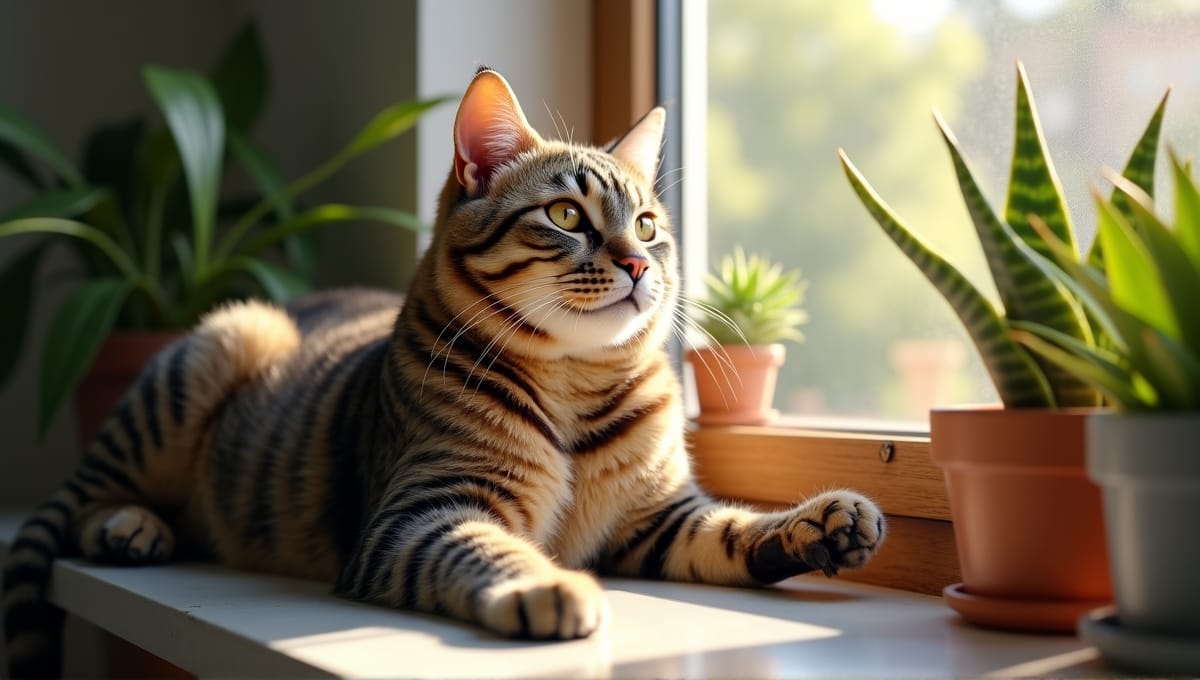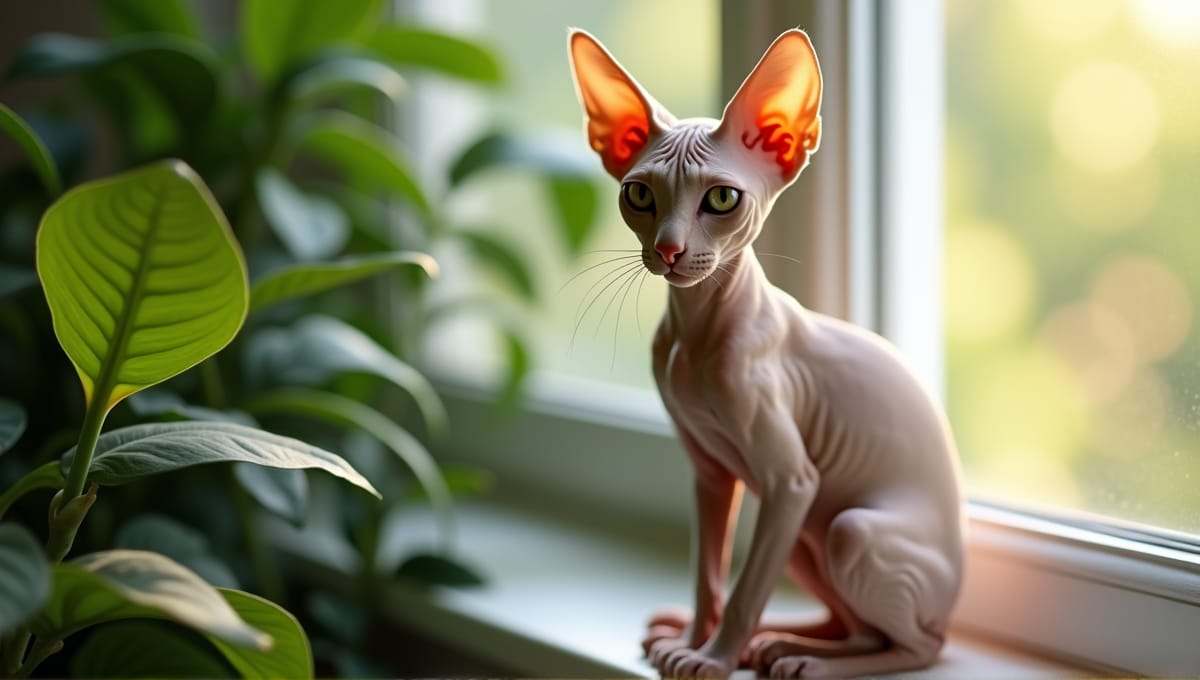Tonkinese cats make excellent family pets. I’ve been breeding these smart cats for many years, and they’re some of the most affectionate cats I’ve ever encountered. They’re social, playful cats that love to be around people. Tonkinese cats are extremely adaptable to different family situations and are great with children and other pets. They’re also a medium size and have a short, low-maintenance coat, making them a great option for active families who want a loyal sidekick.
Breed Profile: Tonkinese cats
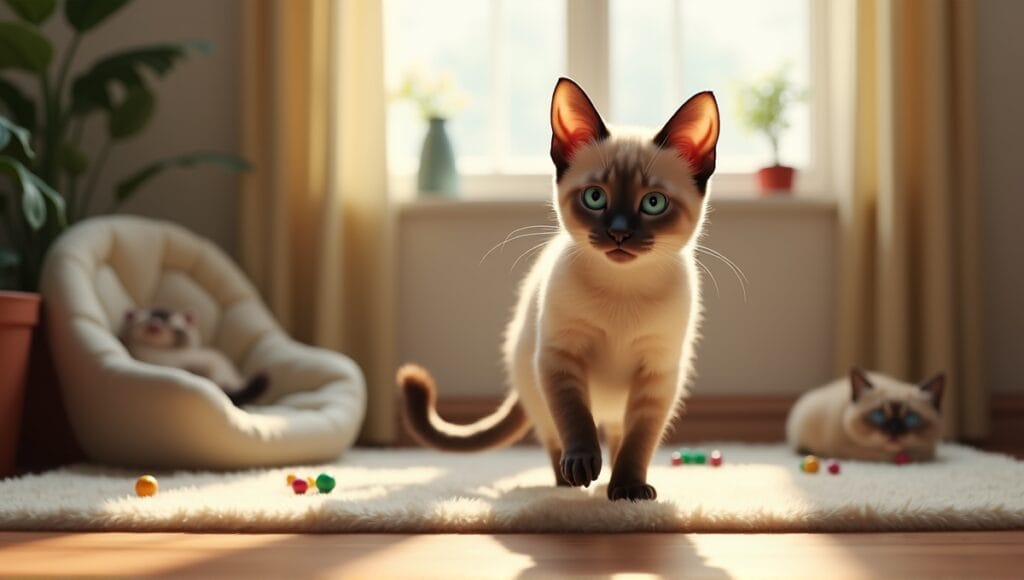
Tonkinese cats are an interesting breed with an interesting history. They date back to the 1930s when the breed was first created by crossing a Siamese with a Burmese. The result is a cat that combines the best qualities of both parent breeds. The Tonkinese has a medium-sized, muscular body with a short coat that is sleek to the touch. Their eyes are one of their most defining features, appearing almond shaped and usually aqua or blue-green in color.
In my experience, the Tonkinese cat is extremely affectionate and social. They enjoy being around people and are often the ones seeking attention. These cats are playful and highly intelligent. Additionally, they are quick learners and enjoy any toy or game that allows them to use their intellect.
In terms of health, the Tonkinese is a relatively healthy breed. They live an average of 15-20 years, which is impressive given their size. They typically weigh between 6 and 12 pounds, and males are generally a bit larger than females. It’s interesting to note that the Tonkinese breed is still relatively new to the scene. The International Cat Association (TICA) recognized them in 1984, and the Cat Fanciers’ Association (CFA) recognized them in 2001.
Tonkinese Cat Coat Colors and Patterns
The Tonkinese coat is an interesting topic for any cat lover. The most notable aspect is the mink coat pattern. This unique pattern causes the cat to have slight shading that is darker on the points (face, ears, legs, and tail) and lighter on the body. It’s a lovely mix that distinguishes the Tonkinese from other cats.
Tonkinese cats come in four primary colors:
- Natural (brown)
- Champagne (beige)
- Blue
- Platinum
Each of these colors can also come in three variations: solid, pointed, or mink. The mink pattern is the most desirable and what most people consider to be the true Tonkinese cat.
The genetics behind Tonkinese coat colors are a bit complicated. These cats have both the Burmese color gene (cb) and the Siamese color gene (cs). When a cat receives one copy of each of these genes (cbcs), it will have the mink pattern. This is a great example of incomplete dominance in coat color genetics. If you’re interested in other unique coat patterns, you might want to check out the oriental shorthair, which is known for its diverse color variations.
Playful and Affectionate Feline Companion
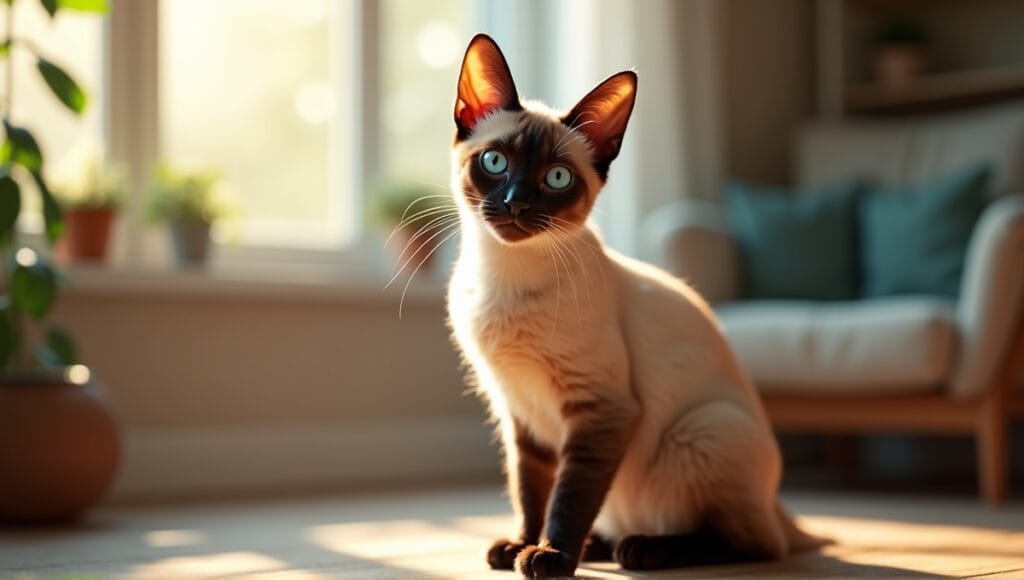
I’ve studied Tonkinese cats for many hours, and in my experience, they’re one of the smartest cat breeds I’ve come across. You’ll be amazed at how fast they pick up tricks and commands. They also excel at solving problems. For example, I once watched a Tonkinese cat learn how to open a cabinet to access their treats in record time!
Tonkinese cats are highly social animals. They crave human companionship and don’t do well if left by themselves for long periods. If you want a cat that greets you at the door and follows you around the house, a Tonkinese will likely do just that.
While these cats are quite talkative, they aren’t nearly as loud as their Siamese ancestors. They have a lovely, melodic voice and will often “talk” to you throughout the day. Think of it as their way of ensuring you stay in the loop on their activities.
Tonkinese cats are playful and active. They need at least 10-15 minutes of active playtime each day, though they’ll happily play for longer if you’re up for it. Their high energy levels also make them an excellent fit for families with kids or other pets. If you’re looking for another energetic and playful breed, you might consider the japanese bobtail, which shares some similar traits with the Tonkinese.
Medical Issues in This Unique Feline Breed
While Tonkinese cats are generally healthy, there are a few genetic health problems to watch out for. The most common health concerns include:
- Progressive Retinal Atrophy (PRA)
- Heart issues
- Inflammatory Bowel Disease
- Dental issues
- Gingivitis
- Inherited trait causing crossed eyes
Regular visits to the vet are important to ensure the health of your Tonkinese cat. I recommend visiting the vet at least twice annually to identify any potential problems early.
Dental care is particularly important for this breed. To prevent gingivitis and other dental issues, be sure to regularly brush your cat’s teeth or give them dental treats.
Proper nutrition also significantly impacts the overall health of your Tonkinese cat. Feeding them a high-quality, balanced diet suitable for their age and activity level is important. Consult with your vet to determine the best diet for your cat.
Grooming and Care for Tonkinese Cats
Tonkinese cats have a short fine coat that is relatively low maintenance. However, basic grooming is still necessary to keep them healthy and happy. I recommend brushing your Tonkinese once or twice a week to remove loose hair and distribute skin oils. This will also help prevent hairballs and keep their coat looking its best.
While you don’t need to bathe your Tonkinese cat unless they get into something messy, a bath every few months won’t hurt. Their shorthair does an excellent job of self-cleaning.
If you do bathe your Tonkinese, use a gentle cat shampoo and be sure to rinse them thoroughly.
You also need to stay on top of your cat’s nails. Plan to trim them every 2-3 weeks, though your cat may need more or less frequent trims depending on their activity level. It’s a good idea to check and clean your cat’s ears regularly to prevent wax buildup and potential infections.
Like all cats, dental care is critical for a Tonkinese. Aim to brush your cat’s teeth daily, or at least several times a week. If your cat won’t tolerate brushing, dental treats or water additives can help keep their teeth and gums healthy.
Remember, Tonkinese cats are active and need plenty of toys and climbing structures to keep them busy. Use interactive play sessions to bond with your cat and ensure they’re getting enough exercise.
Adopting a Tonkinese Cat
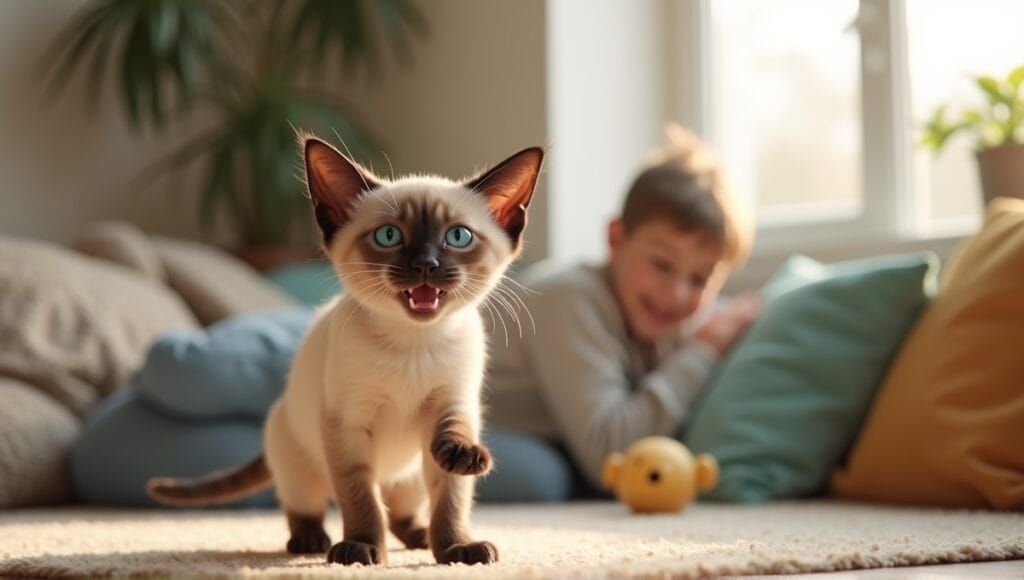
When adopting a Tonkinese cat, it’s important to select a reputable breeder. Look for breeders registered with reputable cat associations who prioritize the health and well-being of their cats. Feel free to ask for health certificates and to meet the parent cats.
The adoption process often involves filling out an application and possibly a home visit. Be ready to answer questions about your lifestyle and experience with cats. Remember, adopting a cat is a long-term commitment.
The upfront cost of a Tonkinese can vary, but you can expect to pay anywhere from $600 to $1,500 for a kitten from a reputable breeder. Other ongoing costs include high-quality food, regular vet checkups, and perhaps health issues as they get older.
Before bringing them home, ensure you have all the necessary Tonkinese cat supplies, such as a litter box, food and water dishes, a scratching post, and toys. Prepare your home by securing loose wires and removing any toxic plants or objects.
If you have other pets, introduce them to your new Tonkinese gradually. Start by keeping them in separate rooms and slowly introducing them to each other. While Tonkinese generally get along well with other pets, it’s important to be patient, as each animal is an individual. If you’re considering other breeds that are good with families and other pets, you might want to look into the balinese cat, which shares many of the Tonkinese’s social qualities.
Tonkinese Cats as Indoor Pets
Tonkinese cats are excellent indoor cats, and it’s essential to create a safe and stimulating indoor environment for them. First, ensure the area is free of any potential dangers, including toxic plants, loose wires, and small items they could swallow.
While Tonkinese cats don’t need a large outdoor space, they still need mental stimulation. Therefore, it’s important to offer a variety of toys that challenge their intelligence. You can also use puzzle feeders to mentally stimulate them during meal times.
Here are a few ideas for indoor exercise for Tonkinese cats:
- Interactive wand toys
- Laser pointers (though always finish the game with a physical toy they can “catch”)
- Cat wheel or exercise wheel
- Climbing structures and cat trees
Tonkinese cats also appreciate window perches. A durable perch by a window is a fantastic way for them to safely observe the outside world. Cat trees are excellent for both exercise and giving them a high vantage point to satisfy their desire to climb and survey their environment.
Litter box training is crucial indoors for any cat breed. Luckily, Tonkinese cats are naturally clean animals. As long as you keep their litter box clean, they’ll consistently use it. Keep the litter box clean by scooping it daily and doing a deep clean once per week. Additionally, keep one more litter box than you have cats to ensure they always have a clean litter box.
Let’s Close This Out
As a cat expert and a longtime caregiver of many Tonkinese cats, I can tell you that Tonkinese cats are simply amazing. They’re smart, social, and adaptable. With the right care, love, and mental stimulation, Tonkinese cats are happy and healthy cats. Just keep in mind their specific care requirements, from coat care to healthcare. If you’re looking for a loyal, fun playmate, a Tonkinese cat is an excellent option. These cats are truly irresistible and will quickly become your favorite little buddy because of their lovable nature.




